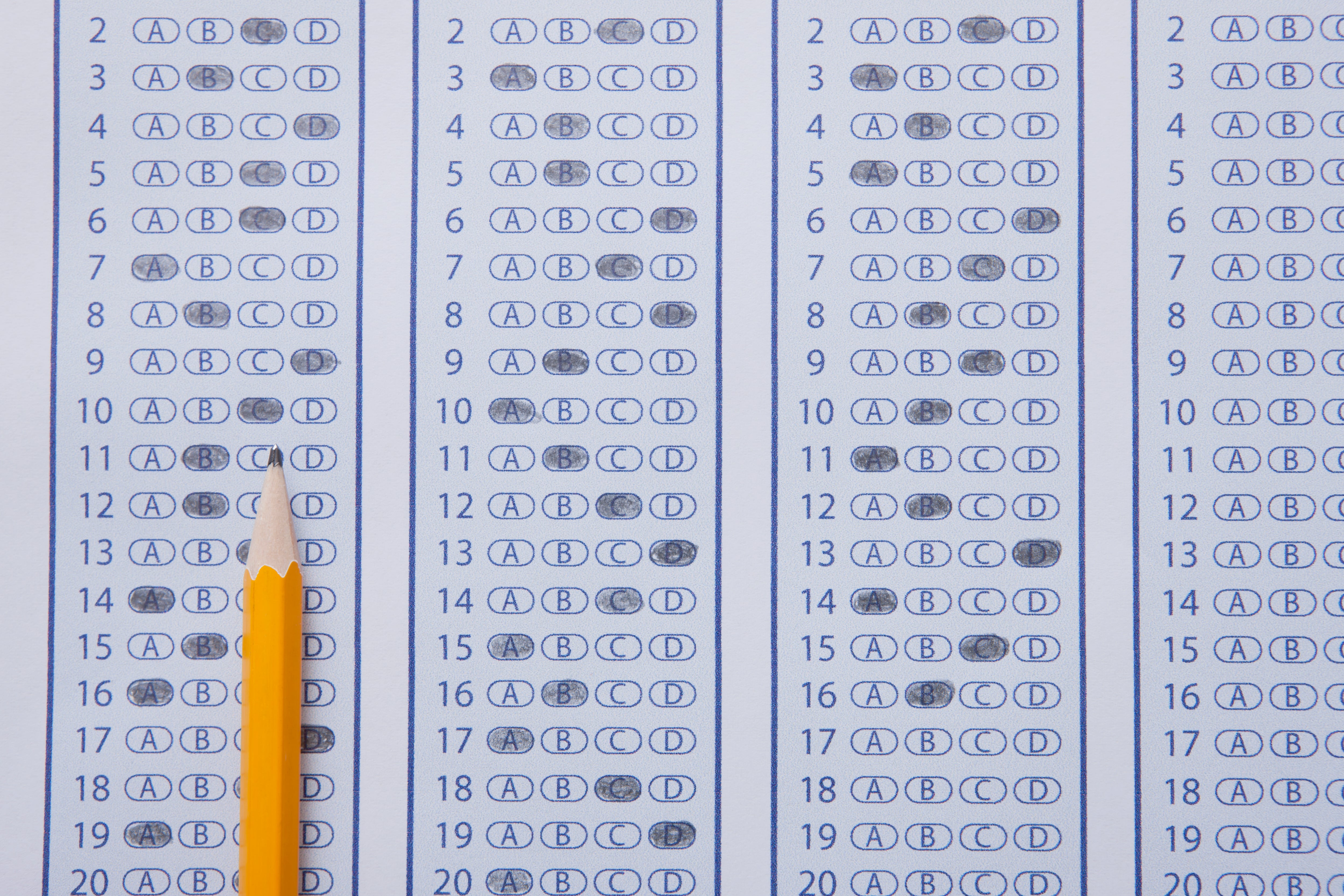Sign up for Chalkbeat Chicago’s free daily newsletter to keep up with the latest education news.
More students in Illinois would be considered proficient on the state’s annual math and reading tests under a proposal to change cut scores, which the Illinois State Board of Education is set to vote on Wednesday.
Cut scores are the scores that separate students into broad categories of achievement, now defined as below proficient, approaching proficiency, proficient, and above proficiency.
Under the proposed changes, 53% of students would be considered proficient in English language arts, 38% would be proficient in math, and 45% would be in science, according to a presentation shared by state education officials Tuesday. Last year, 41% of students were proficient in English language arts, 28% were proficient in math, and 53% were in science.
But the numbers cannot be compared year-over-year because the cut scores changed.
For example, third grade students currently must score 750 out of 850 on the math section of the Illinois Assessment of Readiness to be considered meeting proficiency standards. But under the proposed changes, they would only need to score 732 to be labeled proficient.
On the ACT, a college entrance exam all Illinois high schoolers must take, juniors would need to score an 18 in English language arts and a 19 in math and a 19 in science to be labeled as proficient. In the past, students needed to score a 540 on the SAT in both math and English languages arts.
Illinois State Superintendent Tony Sanders said the current cut scores “do not reflect the reality of student progress.”
“We’ve told a whole generation of our students who were college ready that they were not, and we potentially identified the wrong students for additional support and missed students who could have benefited from acceleration,” Sanders said ahead of a committee meeting Tuesday.
Sanders said the state will not be providing proficiency data using the old cut scores in order for schools and families to make comparisons to previous years. For instance, local school district officials will not be able to compare the fourth grade reading scores of students in 2019 to those who took the exam in the spring of 2025.
Illinois is not the only state to change the cut scores of its standardized tests. States such as Wisconsin, Oklahoma, Alaska, and New York have made similar adjustments to their assessment systems, according to a report by The 74.
The overhaul comes as schools are still bouncing back from the achievement declines of the COVID-19 pandemic. The National Assessment of Educational Progress, or NAEP, also known as the “nation’s report card” found most students across the country have yet to catch up with their pre-pandemic peers and the gap between high performing students and low-performing students has grown wider. The fourth and eighth graders who took the state standardized test in spring 2024 had their learning impacted by the pandemic in earlier grades.
Illinois elementary school students had been seeing progress in reading — even exceeding pre-pandemic proficiency levels — but math scores still lag behind past years, according to the state’s 2024 report card. Illinois’ scores on the most recent NAEP were stagnant.
Still, Sanders said Illinois had some of the highest cut scores in the nation — even exceeding the proficiency score for NAEP. He also emphasized that proficiency is not the same as being on grade level.
“Being not proficient does not mean a student can’t read or can’t do math,” Sanders said.
Illinois educators helped adjust cut scores
Illinois launched its effort to redefine performance after the state switched the high school exam from the College Board’s SAT to the ACT last year.
In the past, there were different proficiency levels for the Illinois Assessment of Readiness, taken by third to eighth grade students, the Illinois Science Assessment, taken in fifth and eighth grade, and the high school college entrance exam, taken by students in 11th grade.
The proposed changes would create consistency in the language used to measure performance on the various tests.
Illinois educators played a role in changing the cut scores and crafting performance level descriptors, or a rubric, for each grade and subject explaining what knowledge or skills students should have based on their proficiency level.
Comfort Agboola, a middle school English language arts teacher in Chicago Public Schools who participated in the process to change the cut scores, said the way the state labels kids based on test scores and performance “can shape the way students see themselves.”
“These updated proficiency standards and performance levels don’t lower the bar,” she said. “They more accurately capture the full spectrum of skills students are developing. They acknowledge growth in ways that can motivate rather than discourage.”
Tyler Chance, an assistant principal at Carbondale Community High School, worked on crafting the English language arts performance level descriptors for high school students taking the ACT. The former English and governance high school teacher said he wanted to get involved in the process to get students ready for college and career opportunities.
Justin Harrison, a 15-year eighth grade science teacher at Vandalia Junior High, worked on the eighth grade science cut scores for the Illinois Science Assessment. The process to create the new cut scores includes using the performance level descriptors and requiring teachers to take the exam. Harrison said the descriptors were helpful to understand what teachers should be assessing their students on.
“I hope that educators can take the time to see what these tools can do,” Harrison said. He really hopes the state provides professional development to educators on the new performance level descriptors.
Dale Chu, a consultant and senior visiting fellow at education think tank Thomas B. Fordham Institute, is not a “big fan” of states like Illinois lowering cut scores. He feels it can have consequences for students in the future. For example, a student could have been at the top of their class in high school, but then has to take remedial courses when they got to college.
“To me, state tests and having cut scores that are rigorous that actually do show whether kids are proficient or not are a big part of being honest with parents,” Chu said.
Chu said states and the federal government have to provide a “credible check” on schools and local districts.
State education officials said the Illinois Learning Standards, which provide educators with information on what students should know in each grade across different subjects, remain the same.
Sanders said the next step in this process for the Illinois State Board of Education is to change the labels the state uses to define school quality by 2026.
Based on students’ test scores and other metrics, such as attendance, schools are labeled as Exemplary, Commendable, Targeted, Comprehensive, and Intensive. How a school is labeled can determine what resources and support they will receive from the state. The state has yet to release more details on these changes.
Samantha Smylie is the state education reporter for Chalkbeat Chicago covering school districts across the state, legislation, special education and the state board of education. Contact Samantha at ssmylie@chalkbeat.org.
Becky Vevea is the bureau chief for Chalkbeat Chicago. Contact Becky at bvevea@chalkbeat.org.






